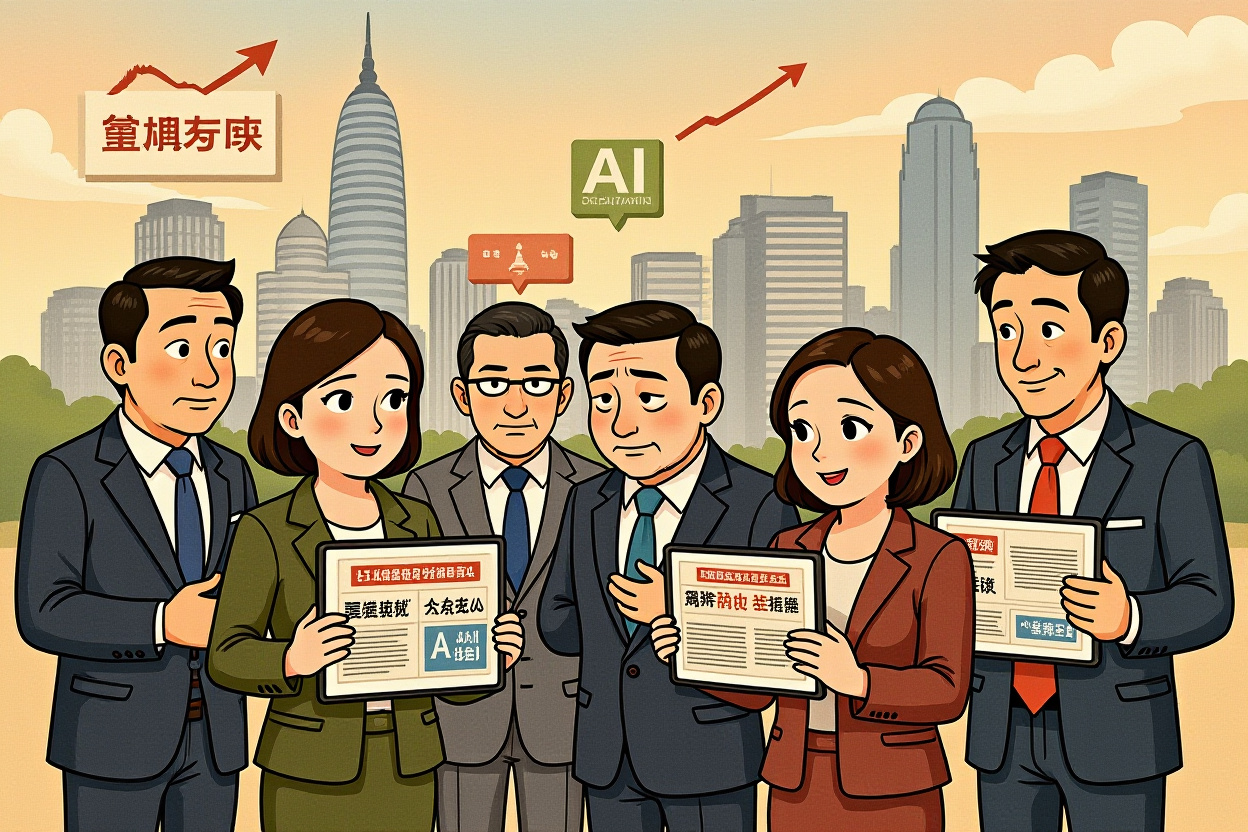AI Disruption Accelerates Beyond Predictions
Anthropic首席执行官 (CEO) Dario Amodei delivered a sobering warning at Wednesday’s Axios AI+ DC Summit: artificial intelligence is advancing faster than anticipated and may soon trigger mass unemployment across multiple sectors. This warning comes despite current AI capabilities lagging behind many predictions, suggesting the technology’s disruptive potential remains underestimated by markets and policymakers alike.
The timing coincides with concerning U.S. labor market data showing unemployment reaching three-year highs with fewer job creations than recent years. While the direct connection to AI remains unproven, the parallel trends highlight growing systemic risks that could eventually impact Chinese technology stocks and manufacturing sectors.
Immediate Workforce Displacement Already Underway
Amodei emphasized that job replacement is already occurring, stating “This is already happening” during his summit appearance. This immediate impact contradicts more conservative timelines previously suggested by industry analysts and suggests the mass unemployment timeline may be compressed.
Historical Context of Technological Disruption
Previous technological revolutions provide mixed precedents for AI-driven workforce transformation. The internet era created net job growth despite temporary displacement periods, but AI’s capabilities for cognitive task automation present fundamentally different challenges.
Morgan Stanley’s 90% Job Impact Assessment
Morgan Stanley (摩根士丹利) strategists recently warned that AI adoption could affect approximately 90% of existing jobs while creating new roles like “AI supply chain analysts” and “AI ethicists.” Their analysis suggests that while net job creation remains possible, significant transitional unemployment appears inevitable.
– Previous technology revolutions caused temporary job losses before net creation
– Worker reskilling capabilities determine reabsorption speed into workforce
– Administrative and legal sectors face highest automation risks according to Goldman Sachs (高盛)
China-Specific Implications and Vulnerabilities
China’s manufacturing dominance and growing technology sector create unique exposure to AI-driven workforce transformation. The mass unemployment warning particularly concerns China given its: massive manufacturing workforce, rapidly expanding AI sector, and significant investment in automation technologies.
White-Collar Job Vulnerability in Chinese Markets
Amodei’s prediction that AI could eliminate half of entry-level white-collar jobs within one to five years carries special significance for China’s service sector expansion. Chinese technology firms have aggressively pursued AI development, potentially accelerating domestic workforce impacts.
– Chinese AI investment reached $15 billion in 2023 according to government reports
– Manufacturing automation already displacing low-skilled workers
– Service sector growth particularly vulnerable to cognitive task automation
Policy Responses and Regulatory Considerations
Amodei suggested governments might need to intervene to support workforce adaptation, potentially through taxation of AI company profits. This policy discussion carries global implications as regulators struggle to balance innovation promotion with social stability protection.
Chinese Regulatory Approach to AI Workforce Transition
China’s State Council (国务院) has already implemented AI development guidelines emphasizing workforce transition planning. The country’s centralized economic planning could provide advantages in managing mass unemployment risks through: targeted reskilling programs, regional economic diversification, and strategic industry development.
Investment Implications for Chinese Equity Markets
The mass unemployment warning signals potential volatility for technology stocks as markets recalibrate AI company valuations against social impact concerns. Chinese investors should monitor: automation technology adoption rates, regulatory responses, and workforce productivity metrics.
Sector-Specific Impact Assessment
– AI development companies may face increased regulatory scrutiny
– Traditional manufacturing stocks could benefit from productivity improvements
– Service sector companies face greatest restructuring costs
– Training and education sectors positioned for growth
Strategic Preparedness for Workforce Transformation
Forward-looking companies and investors should develop strategies addressing potential mass unemployment scenarios. This includes diversification beyond automation-vulnerable sectors, investment in human-AI collaboration technologies, and monitoring government policy developments.
The accelerating pace of AI development demands urgent attention from policymakers, corporate leaders, and investors worldwide. While the exact timeline remains uncertain, the mass unemployment risk requires proactive preparation rather than reactive response.
Monitor Chinese regulatory announcements, corporate earnings calls for automation impact discussions, and workforce development initiatives from major technology firms. The companies that successfully navigate this transition will likely emerge as market leaders in the AI-driven economy.




